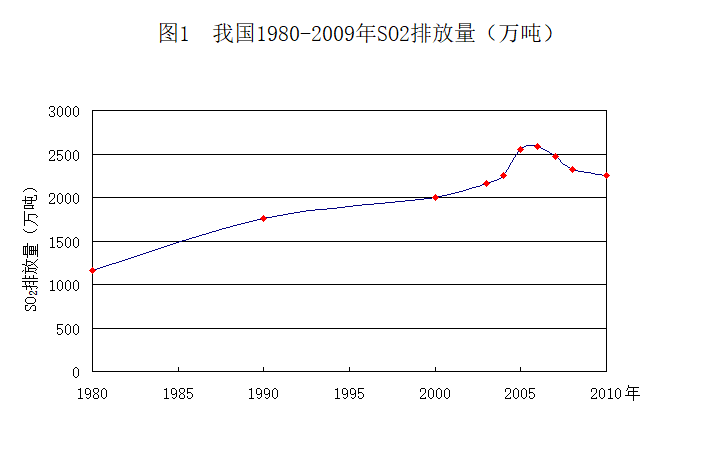论文总字数:32170字
摘 要
2的排放,极大的破坏了中国环境,酸雨区持续扩大。我国目前90%的SO2排放量是由于燃煤产生的。因此,控制和减少燃煤SO2排放量已是刻不容缓。循环流化床锅炉技术是一项高效低污染清洁燃烧的枝术,在工业锅炉和废弃物处理利用等领域已得到广泛的商业应用。国内在这方面的研究、开发和应用也逐渐兴起,已有上百台循环流化床锅炉投入运行或正在制造之中。未来的几年将是循环流化床飞速发展的一个重要时期。我国已有部分省市区建立了脱硫环境管理平台,其主要功能为环境数据统计、上报,其中最为重要的环节是环保数据的采集,而对于像脱硫效率这样的数据,则需要根据实时采集到的数据运用各种数理模型对环境信息进行分析和预测,进行计算得到。由于影响脱硫效率的变量多而且关系复杂,难以建立一般的数学模型,则需要建立模糊算法。人工智能算法在这方面有着非常大的优势,通过数据训练可以得到,复杂的或者非线性的拟合函数。本研究基于现行的环保检测平台,开发实时性的检测数据算法,实现两个个目标:第一,根据工程经验和以往的环保测定数据库,建立一套有效值筛选系统,将故障数据排除,并建立故障数据库,判断运行故障。第二,通过理论分析和实验,确定与脱硫效率相关的数据量,通过对流程中具有逻辑准则的系列过程数据建立条件规则库,使用基于BP网路得人工智能算法,计算脱硫效率,再与实测销量对比,进行算法训练,最终得到符合工程实际的算法程序。最后使用网格寻优、遗传算法和粒子群优化算法优化,提高精确度。算法采用MATLAB和其人工智能工具箱编写,经过随机选取时段运行数据验证,定量分析模型预测准确度较高,反应速度快,与实际数据变化趋势相符。关键字:脱硫管理;环保专网;BP人工智能算法;脱硫效率算法
Model Reaserch for Calcium Injection Desulphurization in the Boiler of CFB based on Internet of Things
03211738 Xu Jie
Supervised by Senior Engineer Shen Kai
Abstract:China regards coal as the main energy source and about 70% of energy consumption comes from coal annually. With the rapid development of economy, coal consumption is also growing. At the same time, the corresponding environmental problem is also increasingly severe. A lot of SO2 emissions have greatly destroyed the environment of China and the acid rain zones are continuing to expand. 90% of SO2 emissions in China come from coal combustion currently. Therefore, it is no delay to control and reduce SO2 emissions. Circulating fluidized bed boiler technology is an efficient and low-pollution clean-burning sticks and has been widely applied to commercial fields of industrial boilers and waste disposal, etc. Domestic research, development and application in this regard is also gradually on the rise, with more than one hundred circulating fluidized bed boiler in operation or are being manufactured. The next few years will be an important period of rapid development of a circulating fluidized bed.In the field of environmental management has been part of the establishment of provinces, municipalities, environmental management platform desulfurization, and its main function as environmental statistics, reporting, one of the most important aspects is to collect environmental data, and for data such as the desulfurization efficiency, you need to use a variety of mathematical models based on real-time data collected for analysis of environmental information and forecasts are calculated to obtain. Desulfurization efficiency due to multiple variables and complex relationship, it is difficult to establish a general mathematical model, you need to create a fuzzy algorithm. Artificial intelligence algorithms in this area has a very big advantage, you can get through the training data, complex or nonlinear fitting function.In this study, the development, based on current environmental testing platform, of real-time test data algorithm to achieve two objectives: first, based on past environmental measurement database, set up a screening system RMS, the fault data exclusion. Second, through theoretical analysis and experiments to determine the desulfurization efficiency associated with the amount of data to establish conditions for the rule base through a series of process data for processes with logical criteria, the use of artificial intelligence algorithms based on BP network was calculated desulfurization efficiency, then with actual sales comparison for algorithm training and eventually get in line with the actual algorithm works. Finally, using the grid optimization, genetic algorithm and particle swarm optimization algorithm to optimize and improve accuracy. Artificial intelligence algorithms using MATLAB toolbox and its preparation, running through a randomly selected time data validation, quantitative analysis models predict higher accuracy, fast response, consistent with the actual data trends.
Key words: Desulfurization monitoring; Environmental network; BP artificial intelligence algorithms ;Desulfurization efficiency of the algorithm
目 录
1绪论………………………………………………………………………………………………1
1.1 研究背景………………………………………………………………………………………1
1.2 二氧化硫排放标准……………………………………………………………………………1
1.3 环境在线监控平台现状………………………………………………………………………2
1.4 国内外研究现状………………………………………………………………………………2
1.5 原始数据及条件………………………………………………………………………………4
2循环流化床锅炉结构及脱硫原理 ……………………………………………………………5
2.1 循环流化床燃烧技术…………………………………………………………………………5
2.1.1 循环流化床锅炉的结构及工作过程………………………………………………………5
2.1.2 循环流化床锅炉的特点……………………………………………………………………5
2.2 循环流化床炉内喷钙脱硫过程探究…………………………………………………………5
2.2.1 煤中硫的析出机制…………………………………………………………………………5
2.2.2 石灰石在炉内的脱硫过程分析……………………………………………………………6
3循环流化床脱硫效率影响因素分析……………………………………………………………8
3.1 Ca/S比的影响…………………………………………………………………………………8
3.2 床温的影响……………………………………………………………………………………8
3.3 石灰石特性的影响……………………………………………………………………………8
3.4 脱硫剂停留时间的影响………………………………………………………………………9
3.5 炉内压力的影响………………………………………………………………………………9
4循环流化床炉内喷钙烟气脱硫效率模型………………………………………………………10
4.1 神经网络介绍…………………………………………………………………………………10
4.2 BP网络介绍……………………………………………………………………………………11
4.3 BP神经网络的算法设计理论…………………………………………………………………12
4.4 二氧化硫的产生量…………………………………………………………………………14
4.5 关键测量点范围值…………………………………………………………………………14
4.6 程序说明……………………………………………………………………………………18
4.7 学习算法的优化……………………………………………………………………………25
5结论与展望……………………………………………………………………………………27
致谢………………………………………………………………………………………………28
参考文献…………………………………………………………………………………………29
基于环保物联网的循环流化床锅炉炉内喷钙脱硫模型研究
1、绪 论
1.1 研究背景
随着国民经济和社会的发展,我国发电行业发展迅速,大气污染物排放量不断增加。2005年我国耗煤量为22.2亿吨标准煤,当年SO2排放量为2549万吨。我国1980~2010年SO2排放量变化情况见表1。由表1看出,我国经济不断发展,SO2排放量也在增长。SO2的大量排放给人们的身体健康带来巨大威胁,也对环境造成极大破坏,使我国酸雨区持续扩大。因此,控制和减少燃煤SO2排放量已是刻不容缓。
表1 我国1980-2009年SO2排放量(万吨)
年 | 1980 | 1990 | 2000 | 2001 | 2002 | 2003 |
SO2 | 1160 | 1761 | 1995.1 | 1947.2 | 1926.6 | 2158.5 |
年 | 2004 | 2005 | 2006 | 2007 | 2008 | 2009 |
SO2 | 2254.9 | 2549.4 | 2588.8 | 2468.1 | 2321.2 | 2214.4 |

1.2 二氧化硫排放标准
剩余内容已隐藏,请支付后下载全文,论文总字数:32170字
该课题毕业论文、开题报告、外文翻译、程序设计、图纸设计等资料可联系客服协助查找;


